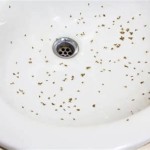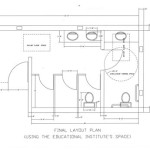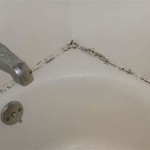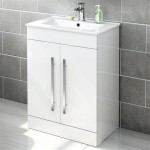Essential Aspects of Do-It-Yourself Bathroom Sink Replacement
Undertaking a Do-It-Yourself (DIY) bathroom sink replacement can be a rewarding home improvement project, saving you money and enhancing the aesthetics of your bathroom. However, it's essential to approach this task with the proper knowledge and preparation. This guide will delve into the fundamental aspects of DIY bathroom sink replacement, providing you with step-by-step instructions and tips to ensure a successful outcome.
1. Planning and Preparation
Before embarking on the sink replacement, it's crucial to plan and gather the necessary materials. Determine the size and style of the sink you need, taking into account the available space and your bathroom décor. You will also require tools such as a wrench, pliers, putty knife, and caulk gun. Additionally, ensure you have access to a clean water supply and a drain to dispose of the old sink and drainpipes.
2. Safety Precautions
Safety should be your utmost priority throughout the process. Turn off the water supply at the main shut-off valve before disconnecting any plumbing fixtures. Wear appropriate safety gear, including gloves and eye protection. If you encounter any electrical components, exercise caution and consult an electrician if necessary.
3. Disconnecting the Old Sink
Start by detaching the drainpipes. Using pliers, loosen the nuts that secure the pipes to the sink drain and P-trap. Remove the drainpipes and place them in a bucket for disposal. Next, disconnect the water supply lines. Identify the two supply lines (hot and cold) and use a wrench to loosen the nuts connecting them to the sink faucets. Allow any remaining water to drain from the lines.
4. Removing the Old Sink
Carefully lift the old sink out of place. If the sink is sealed with caulk, use a putty knife to gently loosen it. Once the sink is removed, clean the countertop surface and remove any old caulk or debris.
5. Installing the New Sink
Apply a bead of caulk around the perimeter of the countertop where the new sink will be placed. Carefully position the sink on the caulk and press it firmly into place. Reconnect the water supply lines by tightening the nuts on the faucets using a wrench. Install the drainpipes by connecting them to the sink drain and P-trap, securing them with nuts and washers.
6. Final Checks and Finishing Touches
Turn on the water supply and check for leaks at all connections. If any leaks occur, tighten the connections further or apply additional caulk. Clean the sink and wipe away any excess caulk. Your newly installed bathroom sink is now ready for use.
By following these essential aspects and adhering to the instructions carefully, you can successfully complete the DIY replacement of your bathroom sink. Enjoy the satisfaction of a refreshed bathroom and the savings you have made by undertaking this project yourself.

10 Diy Bathroom Vanity Ideas The Family Handyman

How To Remove And Replace A Bathroom Sink Diy

Diy Bathroom Vanity 12 Rehabs Bob Vila

Diy Sink From Vintage Bowl Farmhouse On Boone

Diy Sink From Vintage Bowl Farmhouse On Boone
:max_bytes(150000):strip_icc()/athomewithashley-07bb4ab1f6354e50b32cef75d1fba3ec.jpg?strip=all)
25 Diy Bathroom Vanity Ideas Perfect For Storage


Diy Vanity Tops For Your Bathroom

Rustic Bathroom Vanity Kreg Tool

Diy Floating Bathroom Vanity Remodelando La Casa
Related Posts







